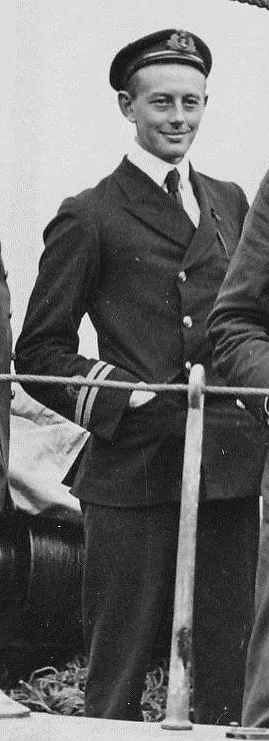Michael Barne - Second lieutenant
(1877 - 1961) - Biographical
notes
Second lieutenant - Discovery 1901-04
 Born
into a well to do family, his father was Frederick Barne, Member
of Parliament for East Suffolk, his mother was Lady Constance
Adelaide Seymour, the daughter of Francis Seymour, the 5th Marquess
of Hertford.
Born
into a well to do family, his father was Frederick Barne, Member
of Parliament for East Suffolk, his mother was Lady Constance
Adelaide Seymour, the daughter of Francis Seymour, the 5th Marquess
of Hertford.
He was educated at Stubbington School with the plan of joining the Navy on leaving when he joined the training ship "Britannia". Barne served with Scott aboard the "Majestic" where he impressed his future commander:
"...I thought him, as he proved
to be, especially fitted for a voyage where there were elements
of danger and difficulty."
Robert Scott
Michael Barne was appointed second lieutenant on the Discovery, a rank to which he had only just been promoted on his previous vessel. He trained at the Ben Nevis Observatory in the winter of 1900 specifically for the Discovery expedition where he took a course in magnetism.
He took responsibility for magnetometry and depth soundings also participating in several sledge journeys making copious notes throughout his three years with the expedition. He was awarded the Polar Medal for his contributions and efforts to the expedition.
On return from the Antarctic in 1904 Barne was married and returned to active service in the Royal Navy with the command of the Coquette. In the First World War he was awarded the DSO (Distinguished Service Order) following service in the Dardanelles and Dover patrol.
In 1914 he was awarded the Royal Humane Society's silver medal for diving overboard and attempting to rescue a sailor during a gale in the Atlantic.
While he retired from the Navy in 1919 with the rank of Captain, he returned during the Second World War to take command of an anti-submarine patrol ship.
Born 15th October 1877 at Sotterly Park, Suffolk - died 31st may 1961, the last surviving member of the Discovery expedition.
Landmarks named after Michael Barne
Feature Name:
Cape Barne
Type: cape
Elevation:
120
Latitude: 77°35'S
Longitude: 166°14'E
Description:
Steep, rocky bluff rising to 120 m between Cape Royds
and Cape Evans on the W side of Ross Island.
Feature Name:
Barne Glacier
Type: glacier
Latitude:
77°36'S
Longitude: 166°26'E
Description: Steep glacier which descends
from the W slopes of Mount Erebus and terminates on the W side
of Ross Island between Cape Barne and Cape Evans where it forms
a steep ice cliff. Discovered by the British National Antarctic
Expedition, 1901-04, under Scott. Named by the British Antarctic
Expedition, 1907-09, under Shackleton after nearby Cape Barne.
Feature Name:
Barne Inlet
Type: bay
Latitude:
80°15'S
Longitude: 160°15'E
Description: A reentrant about 17 mi wide
occupied by the lower part of Byrd Glacier, lying between Cape
Kerr and Cape Selborne on the W side of the Ross Ice Shelf.
Discovered by the British National Antarctic Expedition (1901-04)
named for Lt. Michael Barne, who with Sub-Lt. George F.A. Mulock,
RN, mapped the coastline this far south in 1903.
Biographical information
- I am concentrating on the Polar experiences of the men involved.
Any further information or pictures visitors may have will be gratefully received.
Please email
- Paul Ward, webmaster.
What are the chances that my ancestor was an unsung part of the Heroic Age
of Antarctic Exploration?
